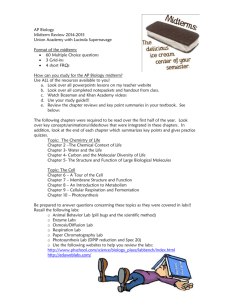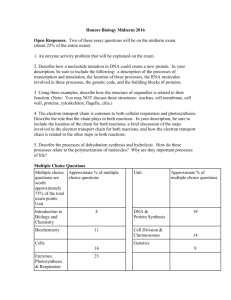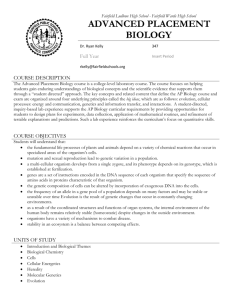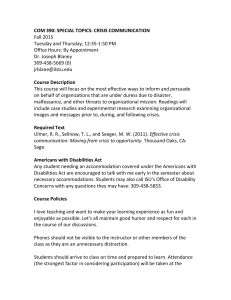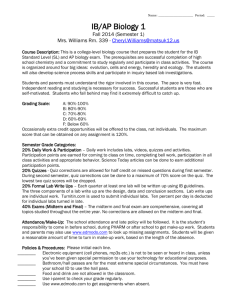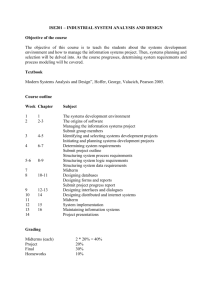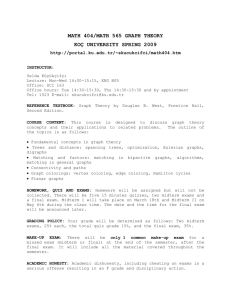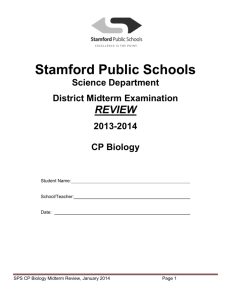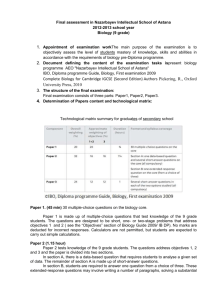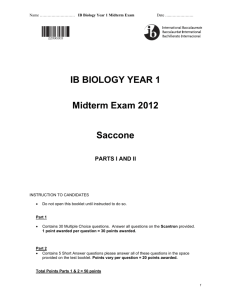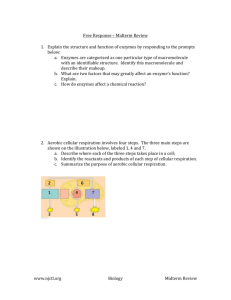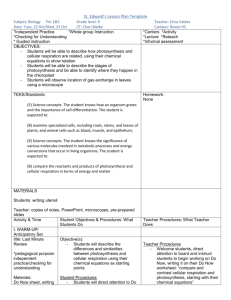Mid term Review
advertisement
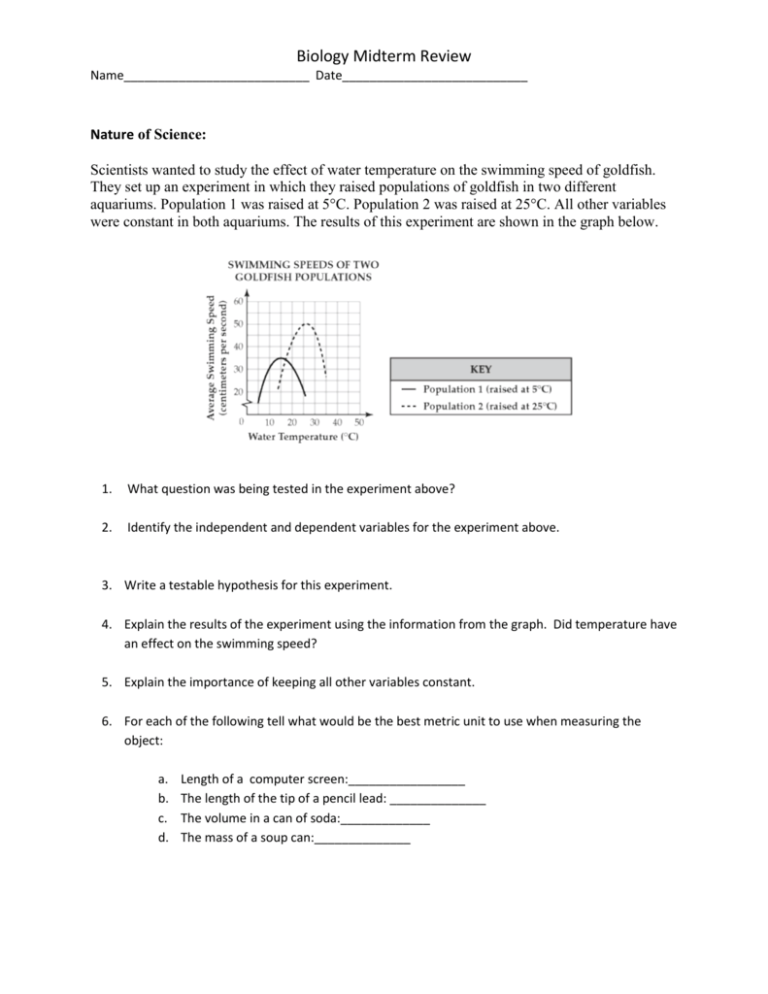
Biology Midterm Review Name___________________________ Date___________________________ Nature of Science: Scientists wanted to study the effect of water temperature on the swimming speed of goldfish. They set up an experiment in which they raised populations of goldfish in two different aquariums. Population 1 was raised at 5°C. Population 2 was raised at 25°C. All other variables were constant in both aquariums. The results of this experiment are shown in the graph below. 1. What question was being tested in the experiment above? 2. Identify the independent and dependent variables for the experiment above. 3. Write a testable hypothesis for this experiment. 4. Explain the results of the experiment using the information from the graph. Did temperature have an effect on the swimming speed? 5. Explain the importance of keeping all other variables constant. 6. For each of the following tell what would be the best metric unit to use when measuring the object: a. b. c. d. Length of a computer screen:_________________ The length of the tip of a pencil lead: ______________ The volume in a can of soda:_____________ The mass of a soup can:______________ Biology Midterm Review Name___________________________ Date___________________________ Biochemistry: 7. Define homeostasis and give an example of it in the human body. 8. Tell the monomer for each organic compound, then sketch what the monomer looks like. a. Carbohydrates___________________ b. Lipid______________________ c. Protein___________________ d. Nucleic Acid________________ 9. Define the following properties of water: a. Adhesionb. Cohesion- c. Polarity10. Define the term catalyst. Tell how enzymes act as catalysts and what letters do most enzymes end with? 11. Label the pH scale below; tell what end of the scale is acid and which is base and what is neutral. 0-------------------------7------------------------14 12. Explain what happens to the strength of an acid or base the further it is located from neutral. Biology Midterm Review Name___________________________ Date___________________________ Ecology: 13. Draw and label the major components of the carbon cycle. Explain how carbon is released into the atmosphere and also how it can be removed from the atmosphere. 14. Explain the difference in the flow of energy and the movement of nutrients through the ecosystems. 15. Explain the similarities and differences between chemosynthesis and photosynthesis 16. Explain each symbiotic relationship and give an example of each. a. Mutualismb. Commensalism- c. Parasitism17. Use the food web above to create a food pyramid that shows on of the food chains in the web. Label each trophic level and explain what happen to the available energy as it is passed from one level to the next. Biology Midterm Review Name___________________________ Date___________________________ 18. Define ecological succession and pioneer species(give an example). 19. Explain the difference between primary and secondary succession. Give an example of when each could occur. Cells: 20. Tell the function of each organelle listed. a. Nucleusb. Vacuolec. Chloroplastd. Mitochondriae. Ribosomef. Golgig. Cell wallh. Cell membranei. Lysosomej. Endoplasmic Reticulum21. Define: a. Diffusionb. Osmosisc. Active transport 22. Biology Midterm Review Name___________________________ Date___________________________ 23. What are mutations and possible ways they can occur? 24. Tell the major differences between eukaryotes and prokaryotes. Genetics: 25. If the body cells of a toad have 22 chromosomes, how many would be found in its gametes? 26. If a fruit fly has 9 chromosomes in its gametes, how many would be found in its body cells? 27. Explain the only way a recessive trait will be expressed. 28. Explain how somatic (body) cell are reproduced. 29. Explain how gametes (sex cells) are reproduced. Why must this process be different from the body cells? 30. What is aerobic respiration? How does it differ from anaerobic? Biology Midterm Review Name___________________________ Date___________________________ 31. Define fertilization. 32. If a heterozygous tall pea plant is crossed with a heterozygous tall pea plant, what is the percentage of offspring that could be short? Cell Processes 33. What gas is released in photosynthesis? How do different wavelengths of light effect the rate of photosynthesis and why? 34. What is the chemical equation of photosynthesis? 35. What is the chemical equation for cellular respirations? 36. Explain how The process of photosynthesis and cellular respiration are related. 37. What is ATP? ADP? 38. Explain the ATP ADP cycle that takes place in living organisms.

